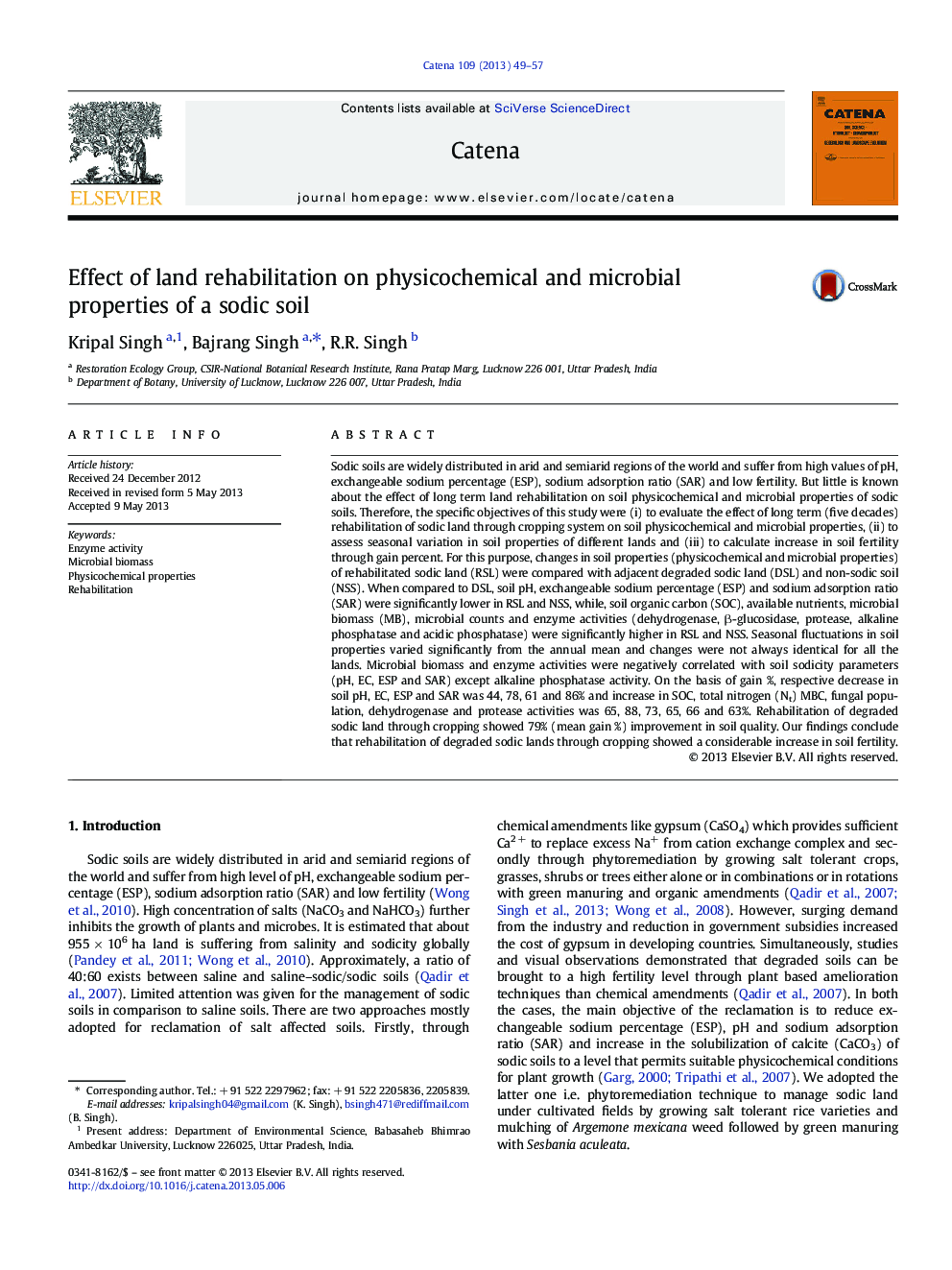| کد مقاله | کد نشریه | سال انتشار | مقاله انگلیسی | نسخه تمام متن |
|---|---|---|---|---|
| 4571569 | 1629243 | 2013 | 9 صفحه PDF | دانلود رایگان |

• Restoration of degraded sodic land through phytoremediation technique for 5-decades.
• Soil properties of degraded, rehabilitated and non-sodic soils were examined.
• Physicochemical, biological and biochemical properties improved significantly.
• Most of the soil properties are influenced significantly by climatic fluctuations.
• Biological and biochemical properties were negatively correlated with soil sodicity.
Sodic soils are widely distributed in arid and semiarid regions of the world and suffer from high values of pH, exchangeable sodium percentage (ESP), sodium adsorption ratio (SAR) and low fertility. But little is known about the effect of long term land rehabilitation on soil physicochemical and microbial properties of sodic soils. Therefore, the specific objectives of this study were (i) to evaluate the effect of long term (five decades) rehabilitation of sodic land through cropping system on soil physicochemical and microbial properties, (ii) to assess seasonal variation in soil properties of different lands and (iii) to calculate increase in soil fertility through gain percent. For this purpose, changes in soil properties (physicochemical and microbial properties) of rehabilitated sodic land (RSL) were compared with adjacent degraded sodic land (DSL) and non-sodic soil (NSS). When compared to DSL, soil pH, exchangeable sodium percentage (ESP) and sodium adsorption ratio (SAR) were significantly lower in RSL and NSS, while, soil organic carbon (SOC), available nutrients, microbial biomass (MB), microbial counts and enzyme activities (dehydrogenase, β-glucosidase, protease, alkaline phosphatase and acidic phosphatase) were significantly higher in RSL and NSS. Seasonal fluctuations in soil properties varied significantly from the annual mean and changes were not always identical for all the lands. Microbial biomass and enzyme activities were negatively correlated with soil sodicity parameters (pH, EC, ESP and SAR) except alkaline phosphatase activity. On the basis of gain %, respective decrease in soil pH, EC, ESP and SAR was 44, 78, 61 and 86% and increase in SOC, total nitrogen (Nt) MBC, fungal population, dehydrogenase and protease activities was 65, 88, 73, 65, 66 and 63%. Rehabilitation of degraded sodic land through cropping showed 79% (mean gain %) improvement in soil quality. Our findings conclude that rehabilitation of degraded sodic lands through cropping showed a considerable increase in soil fertility.
Journal: CATENA - Volume 109, October 2013, Pages 49–57